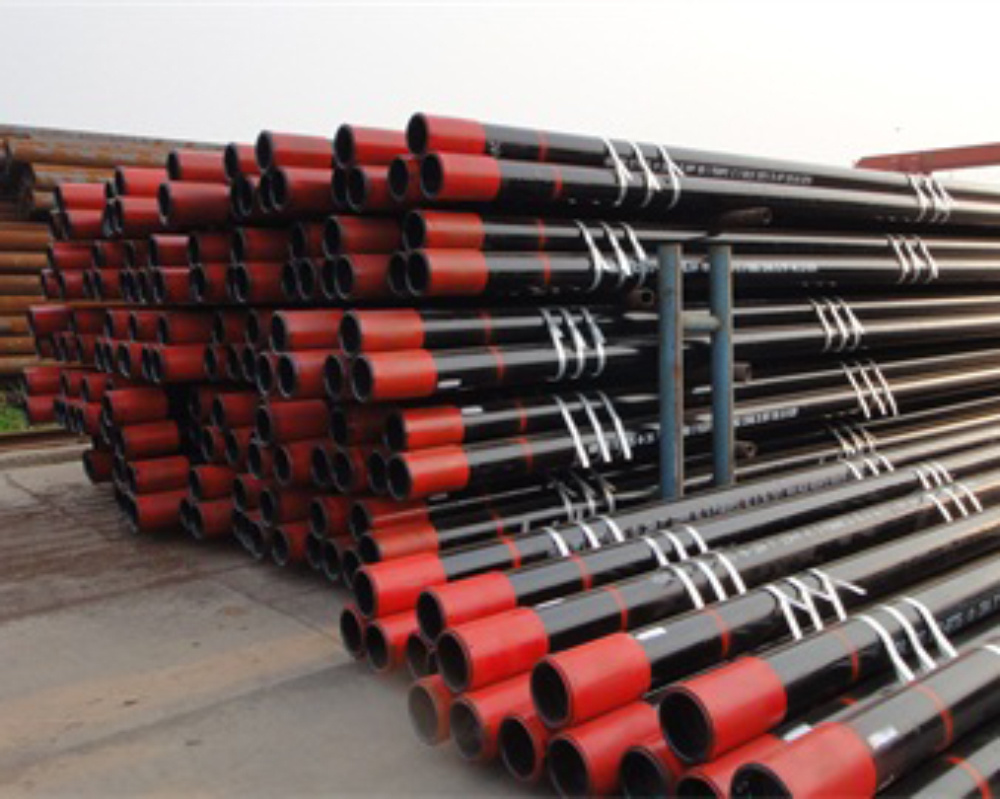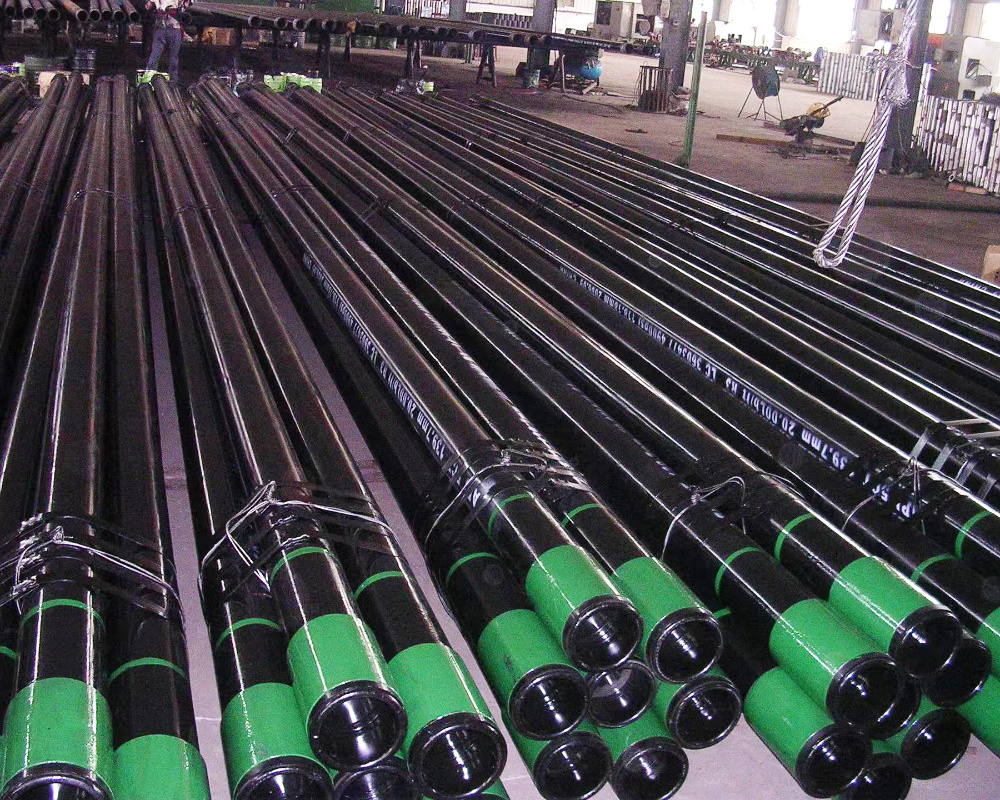The Role of API Seamless Pipe in Sustainable Building Practices: A Comprehensive Guide
The Role of API Seamless Pipe in Sustainable Building Practices
Table of Contents
1. Introduction to API Seamless Pipes
2. Understanding Sustainability in Construction
3. The Importance of API Standards in Construction Materials
4. Benefits of Using API Seamless Pipes
4.1 Improved Durability and Longevity
4.2 Reduced Resource Waste
4.3 Enhanced Performance in Various Environments
5. API Seamless P
The Role of API Seamless Pipe in Sustainable Building Practices
Table of Contents
1. Introduction to API Seamless Pipes
2. Understanding Sustainability in Construction
3. The Importance of API Standards in Construction Materials
4. Benefits of Using API Seamless Pipes
4.1 Improved Durability and Longevity
4.2 Reduced Resource Waste
4.3 Enhanced Performance in Various Environments
5. API Seamless Pipes and Energy Efficiency
6. Applications of API Seamless Pipes in Sustainable Building
6.1 Residential Construction
6.2 Commercial Building Projects
6.3 Infrastructure Development
7. Future Trends in Sustainable Construction with API Seamless Pipes
8. Frequently Asked Questions (FAQs)
9. Conclusion
1. Introduction to API Seamless Pipes
API seamless pipes have become a critical component in the construction industry, particularly in sustainable building practices. API, which stands for the American Petroleum Institute, sets forth rigorous standards that ensure quality and reliability in steel pipes used for various applications. Seamless pipes are manufactured without welding, providing a stronger, more durable product suitable for high-pressure environments. As the construction industry increasingly prioritizes sustainability, understanding the benefits and applications of API seamless pipes is essential for architects, engineers, and builders.
2. Understanding Sustainability in Construction
Sustainability in construction refers to the ability to create structures that consume fewer resources, reduce waste, and minimize environmental impact. This concept encompasses various practices, including using energy-efficient materials, reducing carbon footprints, and enhancing the lifecycle of construction products. Sustainable building practices are not just a trend; they are becoming a necessity in our efforts to combat climate change and promote resource conservation.
3. The Importance of API Standards in Construction Materials
API standards ensure that seamless pipes meet specific performance criteria and safety regulations. These standards help guarantee that the materials used in construction are durable, reliable, and suitable for their intended applications. By adhering to API standards, builders can ensure that they are sourcing high-quality materials that contribute to sustainable practices. API seamless pipes are designed to withstand harsh conditions, making them an excellent choice for projects that require longevity and resilience.
4. Benefits of Using API Seamless Pipes
4.1 Improved Durability and Longevity
One of the key benefits of API seamless pipes is their durability. Without welds, these pipes exhibit fewer weak points, making them less susceptible to fractures and leaks. This characteristic is vital in construction, where structural integrity is paramount. The longevity of API seamless pipes means fewer replacements, ultimately contributing to reduced waste and lower resource consumption over time.
4.2 Reduced Resource Waste
Sustainable construction practices seek to minimize waste at every stage of a project. By choosing API seamless pipes, builders can reduce waste generated from repairs and replacements. Additionally, the efficient manufacturing process of these pipes uses fewer raw materials compared to welded alternatives, further contributing to resource conservation.
4.3 Enhanced Performance in Various Environments
API seamless pipes are designed to perform well in diverse environmental conditions, from extreme temperatures to corrosive environments. This versatility allows them to be used in a variety of construction applications, including those that require resistance to high pressure and temperature fluctuations. Their adaptability supports sustainable construction by ensuring that structures can withstand the test of time and environmental challenges.
5. API Seamless Pipes and Energy Efficiency
The use of API seamless pipes can significantly enhance the energy efficiency of buildings. These pipes are often used in plumbing, heating, and cooling systems, where energy loss can be a significant concern. By minimizing the potential for leaks and ensuring optimal flow rates, API seamless pipes help maintain consistent temperatures and reduce energy consumption. This efficiency not only lowers operational costs but also contributes to a building's overall sustainability profile.
6. Applications of API Seamless Pipes in Sustainable Building
6.1 Residential Construction
In residential construction, API seamless pipes are frequently utilized for plumbing and heating systems. Their reliability and durability ensure that homeowners face fewer plumbing issues, leading to lower water and energy waste. Additionally, the longevity of these pipes means that fewer materials are needed over time for replacements, aligning with sustainable building goals.
6.2 Commercial Building Projects
Commercial buildings often have more complex systems that require robust materials. API seamless pipes provide the necessary strength and reliability for heating, cooling, and water supply systems. Their ability to perform in high-demand environments contributes to the energy efficiency and sustainability of commercial spaces.
6.3 Infrastructure Development
Infrastructure projects, such as bridges and tunnels, benefit greatly from the use of API seamless pipes. Their strength and durability are critical in ensuring the safety and longevity of such structures. Moreover, by reducing the need for frequent repairs and maintenance, these pipes play a significant role in minimizing the long-term environmental impact of infrastructure development.
7. Future Trends in Sustainable Construction with API Seamless Pipes
As the construction industry continues to evolve towards more sustainable practices, the role of API seamless pipes is expected to expand. Innovations in manufacturing processes, such as the use of recycled materials and advanced technologies, are likely to enhance the sustainability of these pipes further. Additionally, as building codes and regulations become increasingly stringent regarding environmental impact, API seamless pipes will remain a preferred choice for builders seeking to meet these requirements.
8. Frequently Asked Questions (FAQs)
What are API seamless pipes made from?
API seamless pipes are typically made from high-quality carbon or alloy steel, which ensures durability and resistance to corrosion.
How do API seamless pipes contribute to sustainability?
They reduce waste, enhance energy efficiency, and require fewer replacements due to their durability, making them a sustainable choice for construction.
Are API seamless pipes more expensive than welded pipes?
While they may have a higher upfront cost, their longevity and reduced maintenance needs can lead to overall cost savings in the long term.
Can API seamless pipes be recycled?
Yes, API seamless pipes can be recycled, contributing to the circular economy and further reducing environmental impact.
What are the common applications of API seamless pipes in construction?
API seamless pipes are widely used in residential, commercial, and infrastructure projects for plumbing, heating, and cooling systems.
9. Conclusion
In conclusion, API seamless pipes play a vital role in advancing sustainable building practices. Their superior durability, energy efficiency, and adaptability make them an excellent choice for various construction applications. As the industry moves towards a more sustainable future, the adoption of API seamless pipes will undoubtedly continue to grow. By prioritizing materials that not only meet performance standards but also contribute to environmental sustainability, we can create buildings that are not only functional but also responsible stewards of our planet. Embracing API seamless pipes is a step forward in building a greener, more sustainable world.
Related Posts
Understanding Carbon Steel Seamless Pipes: Essential Insights for Construction Professionals
Carbon steel seamless pipes are an integral component in the construction and decorative materials industry, particularly in the realm of building pipes. These pipes are manufactured without seams, which makes them highly durable and reliable for various applications. Understanding their properties, advantages, and applications can greatly enhance decision-making for professionals in the field.
On









